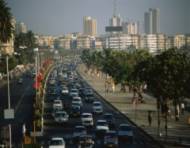 Nokia Location & Commerce (formerly NAVTEQ), a global provider of maps, traffic and location data enabling navigation, location-based services and mobile advertising, recently launched
‘NAVTEQ Traffic Pro real-time traffic service’
in India. This real-time traffic service offers coverage wherever the users drive and delivers detailed information about traffic speed on motorways, main and secondary roads to enable more accurate estimated arrival times.
Nokia Location & Commerce (formerly NAVTEQ), a global provider of maps, traffic and location data enabling navigation, location-based services and mobile advertising, recently launched
‘NAVTEQ Traffic Pro real-time traffic service’
in India. This real-time traffic service offers coverage wherever the users drive and delivers detailed information about traffic speed on motorways, main and secondary roads to enable more accurate estimated arrival times.
Biztech2.com spoke to Hitesh Desai, Product Manager - Global Technology Platform, Nokia Location & Commerce, India to understand how the service can be utilised by enterprises to better manage their fleet.
What was the idea behind setting up real-time traffic service and what business verticals are ideally suited to leverage it?
Many Indian companies have started investing in fleet management. A key therein is to optimise the usage of the vehicles by preventing them from getting stuck in traffic. Real-time traffic service can help in improving the efficiency of fleet operations. The traffic tools can effectively route vehicles to roads with less congestion. In case of delays, customer can be updated on the approximate arrival time of the vehicle. To start with, the service will be available in Delhi and Mumbai.
In terms of the business verticals most suited for real time traffic solutions, we see a lot of potential in logistics and retail sector. In fact, any industry with a large fleet for moving assets fits our target market. To cite an example, banks need to replenish cash in the ATMs on a regular basis. The ATM van transports the cash for ATMs in a particular area. Security personnel at the bank can keep an eye on these vans and steer them clear off congested areas to avoid any mishaps.
How does the entire ecosystem, including you and your partners, collaborate to provide real time traffic information?
Our sourcing partners provide us with GPS information from vehicles. The historical traffic trends on the roads are also taken into account, including the attributes of the road - whether it is a major or a minor road, a two lane or a one lane road. The information is aggregated and worked upon using various algorithms based on our map data to derive the final traffic speed value. We also make Application Programming Interface (APIs) and various feed formats that our partners can use.
In case of mass events on road that can clog the traffic, we don’t provide event based information but speed values of roads with less congestion. For instance, if a mob emerges on the street all of a sudden, we can provide information on roads with relatively less traffic as we would not have any advance information about that event.
What are some of the unintended benefits of the real time traffic service?
One of the important traffic related information is the density of traffic on a particular road segment. In many cities, there are series of advertising boards overseeing flyovers and important roads. This offers a huge opportunity for advertisers to acquire the number of desired eye balls, courtesy, road traffic. Our traffic patterns product can provide information about the best time to put an advertisement based on the traffic density patterns on a particular day / week. The user companies can accordingly use the ad boards only on those days when they can get the best traffic density.
This has not been implemented yet, but the idea came up in our discussions with one of the Indian customers. This can prove to be a great analytics tool both for the advertiser as well as owner of the advertising board.
)